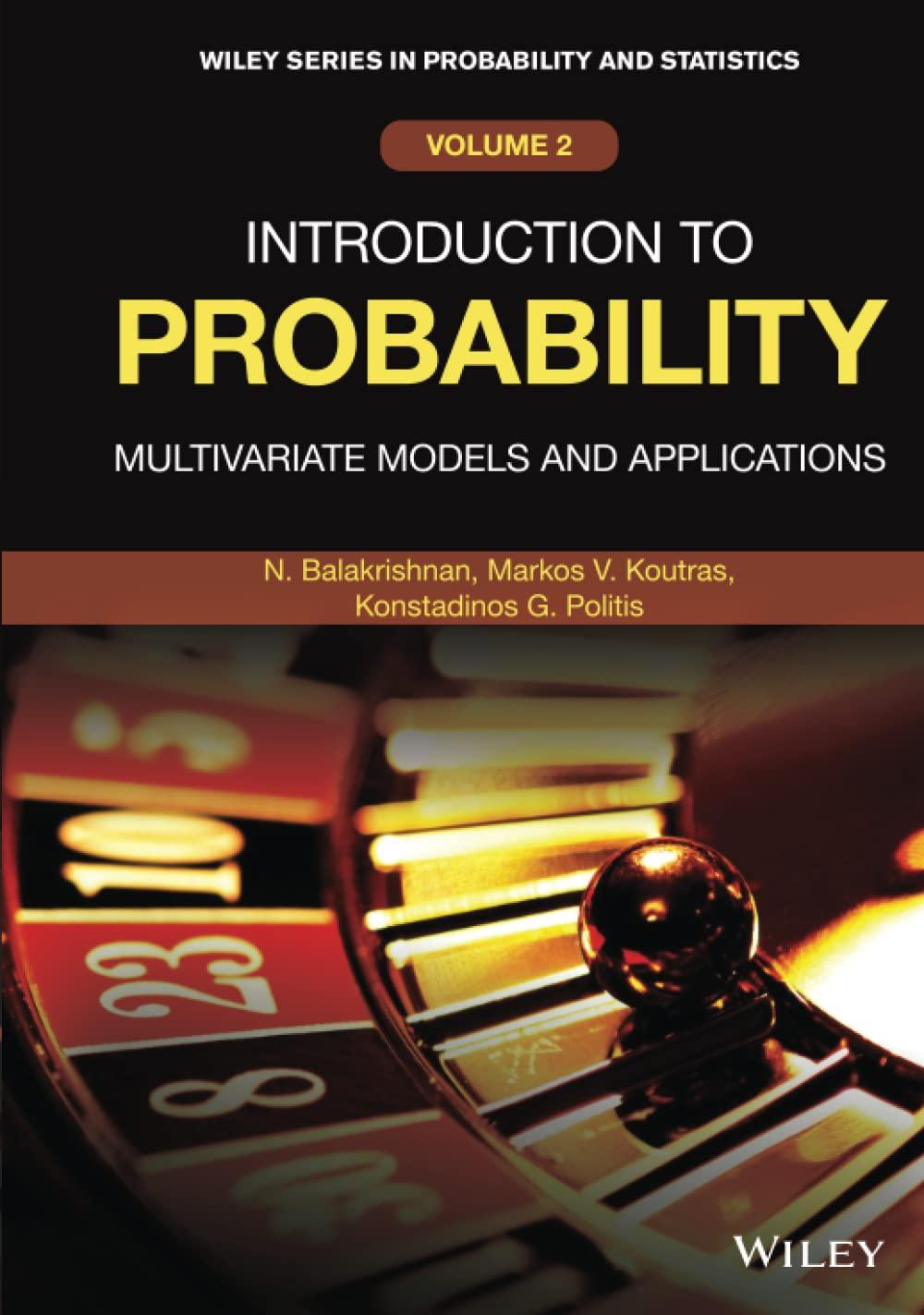In order to describe a chance experiment, we have used the following (continuous) sample space =
Question:
In order to describe a chance experiment, we have used the following (continuous)
sample space
Ω = {(x, y) ∶ −5 ≤ x ≤ 5 and − 3 ≤ y ≤ 7}.
On this space, we define the following events:
A = {(x, y) ∈ Ω ∶ x = y}, B = {(x, y) ∈ Ω ∶ x2 = y2}, C = {(x, y) ∈ Ω ∶ x + y = 0}, D = {(x, y) ∈ Ω ∶ x ≤ y}, E = {(x, y) ∈ Ω ∶ x ≥ y}.
Which of the following statements are correct and which are false?
(a) B = AC;
(b) AC ⊆ B;
(c) D and E are mutually exclusive events;
(d) A = {(x, x) ∶ |x| ≤ 5};
(e) A = DE;
(f) D′ = E − A;
(g) A = {(x, x) ∶ −3 ≤ x ≤ 3}.
Fantastic news! We've Found the answer you've been seeking!
Step by Step Answer:
Related Book For 

Introduction To Probability Volume 2
ISBN: 9781118123331
1st Edition
Authors: Narayanaswamy Balakrishnan, Markos V. Koutras, Konstadinos G. Politis
Question Posted:






